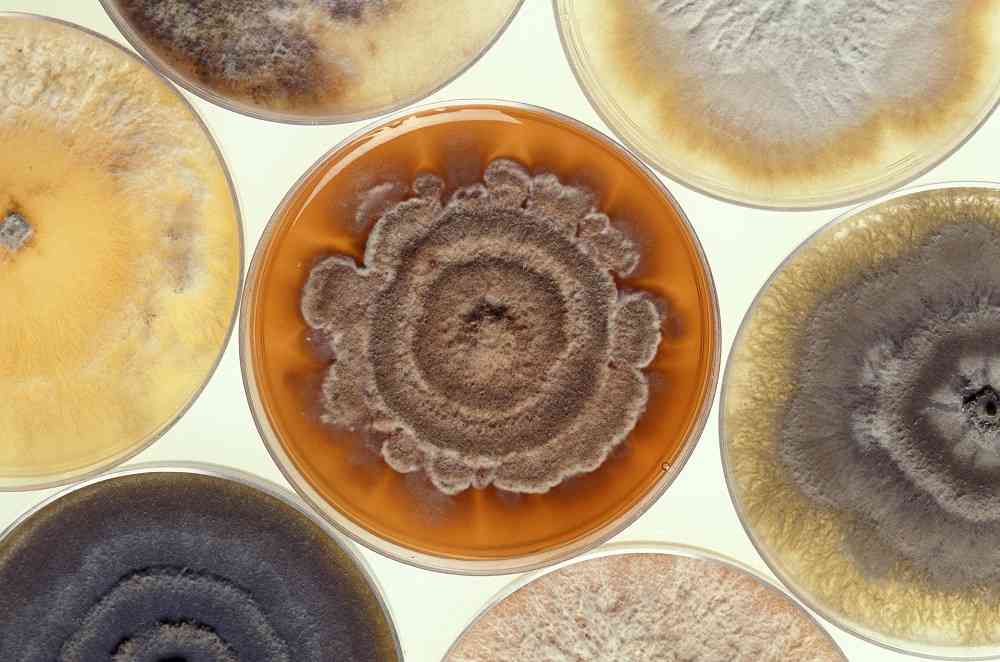There are multiple types of common mold that every adult needs to be aware of. There are hundreds of different types of mold species in our atmosphere. We will address the primary six types of molds that affect households and indoor air quality. Different health problems can occur depending on the type of mold to which you are exposed to. Understanding these types of common molds, symptoms to look for, and the amount of area affected will help you determine if a professional mold removal services are needed.
Here are the 6 Top Common Household Molds:
Alternaria Mold
Alternaria is common outdoors. However, it also grows in damp places indoors. Common examples are tubs & showers, under sinks, crawl spaces and more. It is also very common in buildings that have suffered from water damage. Use caution because Alternaria spreads easily from one area to another.
- CHARACTERISTICS: Dark green, gray, or black with long, velvety hairs.
- WHERE IT GROWS: Carpet, clothing, windows, damp areas and basements.
- HEALTH EFFECTS: Respiratory problems, asthma, and hay fever.
Aspergillus Mold
Aspergillus is common indoors. Because it is very hard on the respiratory system, it can cause a condition called hypersensitivity pneumonitis and inflammation of the lungs. Aspergillus spores easily become airborne. It can greatly affect the indoor air quality and the respiratory system of occupants. Also, it grows very quickly in the right conditions.
- CHARACTERISTICS: Grey, brown, yellow, green, white, or black.
- WHERE IT GROWS: Walls, insulation, clothing, moist areas, crawl spaces, and basements.
- HEALTH EFFECTS: Infections for people with weak immune systems. Produces a carcinogen called aflatoxin. Special care for children, elderly or Aids patients should be given.
Cladosporium Mold
Most types of mold thrive and prefer warmer climates. Cladosporium can grow easily in cool areas. Therefore, we see Cladosporium on fabrics, clothing, carpets, and wood surfaces including furniture, cabinets, and wood floors and substrates. It is a powdery substance and requires careful handling because spores can easily become airborne and contaminate other areas.
- CHARACTERISTICS: Green, brown, gray, or black.
- WHERE IT GROWS: Food and plants, fabrics and clothing, wood and furniture, insulation.
- HEALTH EFFECTS: Harmful to people with asthma, allergies and weak immune systems.
Memnoniella Mold
Memnoniella resembles Stachybotrys the best, only smaller. Generally, found growing together and both are considered toxic. The wind carries Memnoniella spores. They like to settle in a moist, warm environment. This type of common house mold will continue to quickly multiply until there is a change in condition.
- CHARACTERISTICS: Dark green or black
- WHERE IT GROWS: Cotton or wool, canvas, ceilings and walls, damp areas, crawl spaces, and basements.
- HEALTH EFFECTS: Severe respiratory issues, headaches, and coughing
Penicillium Mold
Penicillium is the most known of all of the common house molds because penicillium is the mold that develops with rotten foods. It’s one of the mold types that spread quickly and easily from one area to another. Above all, exposure to penicillium can cause allergic reactions, chronic sinus infections, and inflammation of the lungs. Also, it can appear as a blue mold.
- CHARACTERISTICS: Blue, green, white or black
- WHERE IT GROWS: Food, walls, insulation, moist organic matter.
- HEALTH EFFECTS: Stomach issues if ingested, congestion, coughing, and eye irritation.
Stachybotrys Chartarum Mold
Of the most commonly known household molds, is “black mold” due to its slimy black appearance. Called “toxic mold”. The mold itself is not toxic but it does produce toxic compounds called mycotoxins. This can lead to severe health problems with people who come in contact with or breathe it. A musty odor is common with Stachybotrys. It usually grows in places that stay damp for a length of time. Also, it is known as the most dangerous form of mold. Hence, removal should only be performed by a certified mold removal specialist.
- CHARACTERISTICS: Black or dark green. Slimy in texture.
- WHERE IT GROWS: Walls, ceilings, floors, moist areas, crawl spaces, basements, attics, air conditioning vents, and more.
- HEALTH EFFECTS: May cause cancer or Alzheimer. Severe respiratory issues, headaches, asthma, dizziness, joint pain, fatigue, depression
